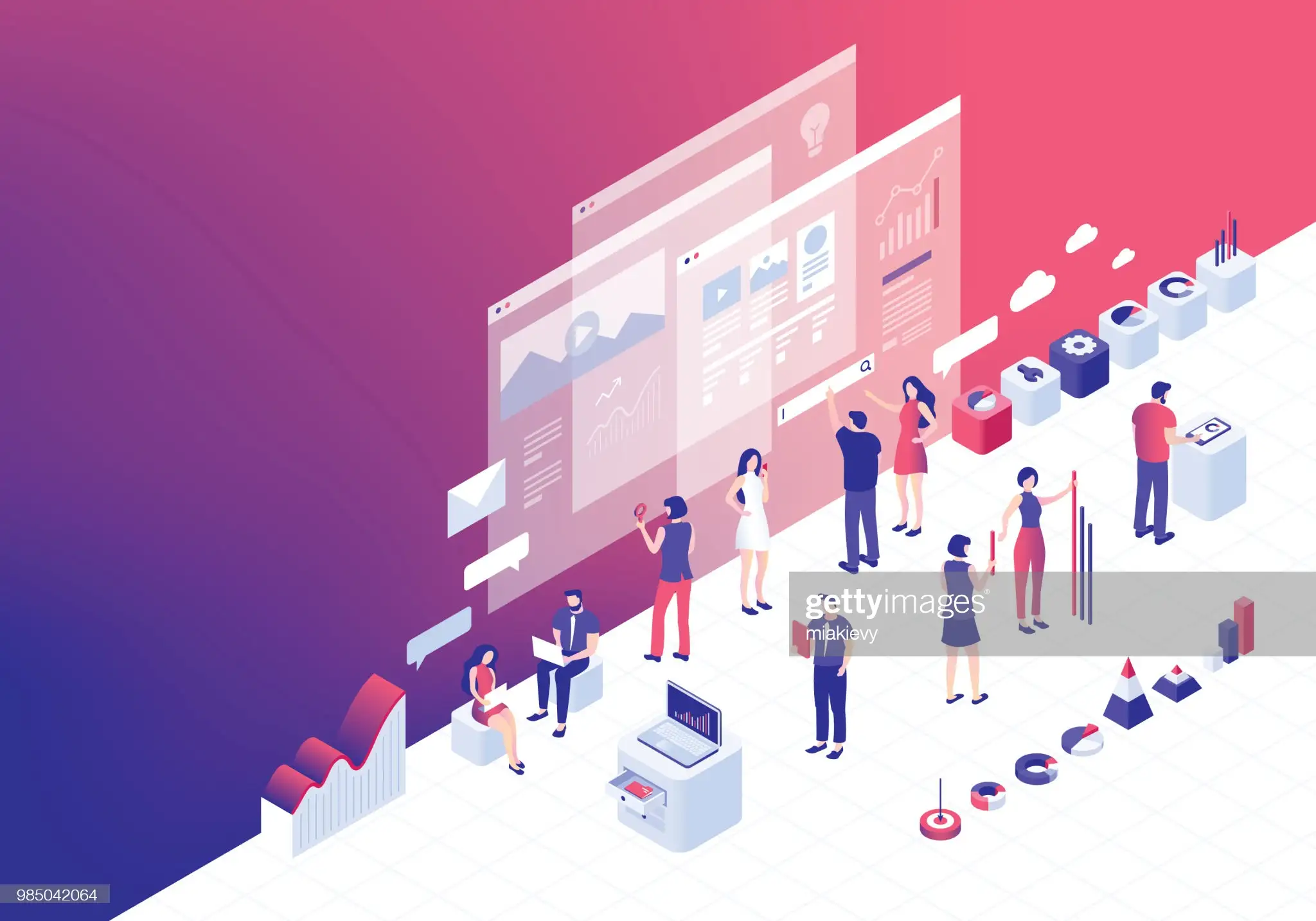In the vast and ever-evolving landscape of eCommerce, a powerful tool has emerged that has the potential to transform a business’s marketing strategy: the customer persona. This potent force, unlocked through a comprehensive understanding of the individual needs, wants, and preferences of your target audience, can drive dramatic improvements in conversions, customer retention, and overall brand alignment. Welcome to the world of “,” where we’ll embark on a creative and insightful journey to unveil the secrets held within the world of customer personas. From understanding the who, what, and why of your customer base, to applying these insights in innovative ways that make a real difference, prepare to be captivated by the magic of customer personas. Let’s dive in and unleash the power!
Table of Contents
- 1. Embracing Customer Personas: Revealing the Secrets behind Successful E-commerce Marketing
- – The Art of Relating to Your Audience
- – Cultivating a Personal Touch in a Digital Age
- – Building Authentic Connections with Customers
- – Harnessing the Power of Data for Enhanced Marketing Efforts
- 2. Understanding the Importance of Customer Personas in E-commerce Marketing
- – The Drivers behind Consumer Behavior: Unlocking Insights for Personalized Marketing
- - The Role of Customer Personas in Segmentation and Targeting Strategies
- – The Ultimate Guide to Elevating Your E-commerce Marketing Game
- – Case Studies in Customer Persona Implementation: Driving Business Success with Data-Driven Marketing
- Q&A
- The Conclusion

1. Embracing Customer Personas: Revealing the Secrets behind Successful E-commerce Marketing
In today’s competitive e-commerce landscape, businesses must adapt and innovate to stay ahead of the curve. One such concept that has solidified its ground in the world of e-commerce marketing is the use of customer personas – and for good reason. Customer personas are a valuable tool that allows businesses to better understand and cater to their target audience, ultimately driving growth and success. By embracing customer personas, businesses can unravel the secrets behind effective e-commerce marketing, leading to a robust customer base and increased revenue.
Customer personas are fictional representations of your ideal customers, combining data-driven insights with human characteristics. They help businesses understand the needs, preferences, and pain points of their target audience. Creating and embracing customer personas involves the following steps:
- Research and data collection: Understanding your audience starts with gathering relevant information. You can capture data through surveys, social media interactions, and website analytics. Additionally, information about customer demographics, behavior, and preferences can be gleaned from other resources such as market research reports and interviews.
- Identifying patterns and trends: Armed with the collected data, the next step is to identify patterns and trends that emerge from the information. This may include common demographics, preferences, or activities among your customers.
- Developing customer profiles: Once patterns and trends have been identified, businesses can begin to create customer profiles. These profiles should reflect the unique needs, preferences, and pain points of each persona. By identifying these, businesses can better tailor their products, services, and marketing efforts to address the specific needs of each group.
For example, a clothing store might identify two customer personas: one for a fashion-forward individual who seeks trendy and unique clothing pieces, and another for a customer interested in a more classic, timeless wardrobe. By understanding each persona’s unique needs, the business can cater marketing efforts and product offerings to ensure satisfaction and loyalty from their target audience.

– The Art of Relating to Your Audience
Customer personas are an essential strategy in eCommerce marketing as they provide a way to better understand and connect with your audience. These are fictional representations of your target consumers, created based on research and data, and they help you tailor your marketing efforts to their needs and preferences. This concept was made popular by the book “The One Thing” by Gary Keller, Jay Papasan, and Mike Doerr. By developing and focusing on customer personas, you can increase sales, build strong brand loyalty, and deliver a personalized shopping experience that truly resonates with your customers.
When creating a customer persona, consider the following key aspects:
- Demographics: Age, gender, location, income, education, occupation
- Personal Interests: Hobbies, favorite movies, books, music, travel destinations
- Psychographics: Personality traits, values, motivations, consumer habits
- Digital Footprint: Social media profiles, online behavior, browsing history
Once you’ve gathered this information, you can use it to create a detailed profile of your ideal customer. From there, you can apply insights from your personas to inform your marketing campaigns, product offerings, and overall brand image. For example, if your primary persona is a young, tech-savvy woman with a love for travel, you might create content that showcases your products in exotic locations and highlights their usefulness for documenting memorable moments. This not only resonates with your target audience but also creates a strong emotional connection.
In summary, focusing on customer personas in eCommerce marketing is a powerful way to humanize your brand and create a truly personalized experience for your customers. By understanding their needs, preferences, and desires, you can tailor your marketing efforts to deliver results that last long after the initial sale.

– Cultivating a Personal Touch in a Digital Age
In the digital age, establishing a strong connection with your customers has become increasingly vital. This is where customer personas come into play, offering eCommerce marketers a powerful tool to create personalized experiences for their clients. Customer personas are profiles that represent a target market segment, helping businesses to understand their demographic, psychographic, and behavioral characteristics. By considering these personas when developing marketing strategies, businesses can discover the magic of engaging with their customers and tailoring experiences to suit their needs.
For example, a fashion retailer might create a persona for their “eco-conscious” customer. This persona might include:
– Demographics: Age, gender, location, income
– Psychographics: Environmental awareness, sustainability concerns, trend-consciousness
– Behaviors: Preference for organic materials, online research, purchasing frequency
Armed with this valuable information, the fashion retailer can then design marketing campaigns that resonate with this segment of the market. This may include:
– Displaying eco-friendly products prominently on the website
– Running targeted ads for eco-friendly products on social media platforms
– Offering exclusive perks and discounts for eco-conscious customers
By staying true to the needs and desires of these personas, businesses can build long-lasting relationships with their customers, fostering trust and loyalty. As a result, customers not only feel valued but align more closely with the brand’s values, leading to increased sales, repeat purchases, and even advocacy.
– Building Authentic Connections with Customers
Customer personas are like secret superpowers in the world of eCommerce marketing. They help businesses understand, engage, and connect more effectively with their customers, resulting in higher customer satisfaction, increased loyalty, and ultimately, better bottom-line results. By crafting these digital doppelgängers, marketers can better anticipate customer needs and tailor their marketing strategies accordingly.
Consider the following powerful benefits of customer personas:
– Improved product offerings: By understanding the unique preferences and pain points of individual customers, businesses can develop products that genuinely address these needs, leading to increased sales and customer satisfaction.
– More targeted marketing efforts: When marketers know who their ideal customers are, they can focus their promotional efforts on the most relevant segments, which translates to better return on investment for their marketing spend.
- Enhanced customer experience: Customer personas help businesses understand how their customers tick, which allows them to provide a more personalized and seamless shopping experience.
– Stronger brand loyalty: When customers feel valued and understood, they’re more likely to stick with a brand, leading to longer-lasting relationships and repeat purchases.
Real-world examples abound. For instance, the online clothing retailer Zara produces AB-tests of its product offerings to tailor them to the preferences of specific customer segments. When it launches a new collection, it first tests it on a select group of customers to gauge their reactions, then it rolls it out more broadly based on the feedback it receives. Similarly, fashion giant Nike has a team of designers and data scientists that heavily rely on customer personas to develop new products, as they know that if they’re not hitting the mark with certain demographics, they’ll lose out on significant sales.
In conclusion, customer personas hold immense potential for businesses, but their power hinges on their authenticity. By taking the time to truly understand your customers, you’ll be able to create powerful personas that drive improved customer experiences, deeper connections, and thriving business results.
– Harnessing the Power of Data for Enhanced Marketing Efforts
The power of data is undeniable in the world of eCommerce marketing, and customer personas play a crucial role in unlocking this potential. Customer personas, also known as buyer personas, are detailed andhighly-specific representations of your ideal customer. They are created by collating data from various sources like customer interviews, surveys, and online behavior tracking, among others. The goal is to create a detailed profile that represents your target market, capturing their demographics, preferences, and behavioral traits. By understanding these unique personas, eCommerce marketers can develop more effective marketing strategies, personalize customer experiences, and ultimately boost sales. Some benefits of using customer personas in eCommerce marketing include:
- Improved targeting: Instead of scattershot marketing efforts aimed at a broad spectrum of customers, marketers can tailor their messaging, products, and offers to the specific needs and preferences of their persona.
- Higher conversions: By understanding the motivations and pain points of their personas, businesses can craft more compelling marketing materials that resonate with target customers, leading to increased conversions.
- Enhanced customer relationships: Personalized experiences for each persona can lead to a stronger emotional connection between the customer and the brand, fostering long-term loyalty andPositive word-of-mouth.
A prime example of the power of customer personas in action can be seen in the online fashion retailer, Zara. Each year, Zara conducts in-depth customer surveys to gather insights on their target demographic. Based on this data, Zara creates different persona types, such as the “Flaneur,” a young, urban, stylish individual, or the “Regular Mrs.,” a middle-aged woman with a practical approach to fashion. With this clear understanding of their ideal customer, Zara can rapidly develop and launch unique designs catering to each persona, ensuring a continuous flow of relevant, in-demand products that drive sales. In conclusion, the key to harnessing the power of data in eCommerce marketing lies in creating and nurturing customer personas that accurately reflect your target market. This attention to detail will pave the way for increased sales, stronger customer relationships, and, ultimately, a more successful online presence.
2. Understanding the Importance of Customer Personas in E-commerce Marketing
The power of customer personas lies in their ability to unveil the inner workings of a business’s potential buyers. They serve as a blueprint for tailored marketing strategies, helping eCommerce businesses to understand their target audience better than ever before. By creating a persona, businesses can pinpoint the specific needs, preferences, and goals of their ideal customer, ensuring that their marketing efforts are both focused and effective.
Creating a customer persona involves delving deep into the psyche of your target audience. Factors to consider include their demographics, behavioral traits, and pain points. Armed with this information, businesses can formulate campaigns that address these needs directly, ultimately driving customer engagement and conversion. For example, a clothing brand could create a persona for their target audience who are “young professionals,” focusing on their style preferences, budget constraints, and desire for unique pieces. By understanding this persona, the brand can design promotions and product launches that resonate with this group, resulting in increased sales and satisfied customers.
“`
- Demographics: Age, gender, income, location, and lifestyle
- Behavioral Traits: Browsing habits, purchase frequencies, and preferred channels
- Pain Points: Challenges faced in the purchasing process or product dissatisfaction
“`
In conclusion, customer personas are living, breathing representations of your target audience, equipping eCommerce businesses with the insight they need to create powerful marketing campaigns. By delving into the lives of your customers, you can design strategies that not only resonate with them, but truly make a difference in their experience and, in turn, your bottom line.
– The Drivers behind Consumer Behavior: Unlocking Insights for Personalized Marketing
In the ever-evolving world of eCommerce, understanding the drivers behind consumer behavior is crucial for businesses to effectively market their products and services. One such tool that has become increasingly popular in this domain is the concept of customer personas. These individuals serve as a representation of a specific customer segment, encompassing their demographics, psychographics, and behavioral tendencies. By identifying and analyzing customer personas, businesses can create tailored marketing strategies that cater specifically to their needs and preferences, ultimately leading to increased customer satisfaction and loyalty.
Customer personas can be powerful tools in eCommerce marketing for several reasons:
– Improved targeting: By narrowing down the target audience, businesses can effectively direct their marketing efforts towards the most relevant demographic. This not only ensures that the campaign resonates with the customer persona but also helps in saving costs and avoiding unnecessary noise.
– Tailored messaging: Personalizing the marketing communication makes it more appealing and relatable to the customer persona. This helps in engaging them emotionally, which ultimately leads to higher conversion rates.
– Better product design: By understanding the unique needs and preferences of each customer persona, businesses can design their products accordingly. This ensures that they are not only useful but also offer a memorable experience to the customer.
An example of customer persona in eCommerce is the “Fitness Enthusiast.” This persona might include individuals who:
– Are aged between 18-35 years
– Are located in urban areas
– Have a high interest in fitness and health
– Prefers online shopping for workout gear due to convenience and access to the latest trends
In conclusion, customer personas play a pivotal role in the realm of eCommerce marketing. By leveraging the power of these virtual personas, businesses can create highly targeted, personalized marketing campaigns that cater to the individual needs of their customers. This, in turn, can lead to increased customer satisfaction, loyalty, and ultimately, business growth.
– The Role of Customer Personas in Segmentation and Targeting Strategies
Customer personas play a crucial role in eCommerce marketing by helping businesses to segment their target audience and tailor their marketing strategies accordingly. These personas are in-depth character studies created based on consumer insights, demographics, and behavioral data. By understanding and appealing to the unique needs, preferences, and pain points of various customer segments, eCommerce marketers can enhance customer engagement, loyalty, and conversion rates. Some advantages of using customer personas in eCommerce marketing include:
– Improved Targeting: By breaking down the market into smaller, more specific customer segments, marketers can identify the best channels and messaging to reach each group effectively. For example, a clothing brand may have a “Fashionista” persona who values hip-trendy designs, and a “Classic Stylist” persona who prefers timeless, well-constructed clothing. The brand can then create advertising campaigns and product offerings that cater to each persona’s unique preferences.
– Better Personalization: Customer personas allow marketers to deliver a more personalized shopping experience for each customer segment. For example, an online bookstore might offer personalized book recommendations based on a customer’s reading history and preferences. This can lead to increased customer satisfaction and potentially higher conversion rates.
Conversely, ignoring the role of customer personas can lead to missed opportunities and ineffective marketing efforts. For instance, attempting to reach a diverse audience with one-size-fits-all marketing campaigns can result in a lack of resonance and lost sales. By creating and utilizing persona-based marketing strategies, eCommerce businesses can unlock the full potential of their target audience and achieve a more successful and sustainable growth.
– The Ultimate Guide to Elevating Your E-commerce Marketing Game
Customer personas in eCommerce marketing have been known to hold the key to unlocking the magic of elevating one’s marketing game. These targeted profiles represent the average customer that is likely to interact with your online store, allowing you to develop more effective marketing strategies and deliver exceptional customer experiences. Let’s dive into the world of customer personas and discover the power this marketing tool holds.
To effectively create a customer persona, you need to gather as much data as possible about your target customers. This data can be obtained through various methods, including online surveys, interviews with your existing customers, and market research. Once you have compiled this information, it’s time to start creating the persona. Consider attributes such as demographics (age, gender, location), psychographics (values, preferences, lifestyle), and behavioral aspects (purchase history, shopping habits) when constructing your persona.
Once your persona is developed, it’s time to put it to work. Here are some ways to use customer personas in your eCommerce marketing:
- Identify your target audience: Understanding your customers’ needs, preferences, and motivations allows you to create content and promotions specifically tailored for them.
- Segment your marketing efforts: By targeting different customer segments with unique content and promotions, you can improve engagement and reach a wider audience.
- Personalize your website and marketing materials: Showcasing your products and services from the perspective of your customer persona can help make your content more relatable and engaging.
- Optimize your conversation strategy: Understanding who your audience is allows you to choose the most effective method of communication (e.g., emails, social media, online advertising) for them.
- Enhance your product offering: Understanding your customers’ needs and preferences allows you to improve and expand your product range, thus increasing customer satisfaction and retention.
In conclusion, customer personas hold immense power in elevating your eCommerce marketing game. By carefully crafting tailored content and promotions, you can increase engagement, improve conversion rates, and ultimately, grow your business. Remember, the sky’s the limit for growth when you know who’s buying your products and why!
– Case Studies in Customer Persona Implementation: Driving Business Success with Data-Driven Marketing
In the wondrous world of eCommerce marketing, the power of customer personas is nothing short of magical. By unlocking the secrets of your ideal customers, you can harness the incredible potential of data-driven marketing and experience exponential growth. Here, we delve into the enchanted realm of customer personas, exploring how they can transform your eCommerce marketing strategy and fuel your business success.
- Understanding the Magic: Customer personas are fictional representations of your ideal customers, crafted based on data-driven insights. By thoroughly understanding their demographics, preferences, behaviors, and needs, you can create personalized marketing campaigns that resonate with them on a deeper level.
- Bringing the Power to Life: The magic of customer personas lies in their ability to improve various aspects of your eCommerce marketing operations. From segmentation and targeting to product development and customer service, customer personas can revolutionize nearly every facet of your marketing efforts.
As the stars align and your marketing strategy comes to life, your business will experience a surge of newfound success. By harnessing the power of customer personas, you can expect to see increased conversions, higher customer satisfaction, and a stronger connection between you and your ideal customers. So, what are you waiting for? It’s time to discover the magic of customer personas in eCommerce marketing and watch your business soar to new heights.
Q&A
**Question:** What is the fundamental principle behind the power of customer personas in e-commerce marketing?
**Answer:** The primary principle behind the power of customer personas in e-commerce marketing is the concept of creating highly detailed and empathetic representations of your target customer base. By understanding and emulating the behaviors, needs, and preferences of your ideal customer, businesses can develop more targeted, personalized marketing strategies that resonate with their audience and drive higher conversions and customer loyalty.
**Question:** How can customer personas benefit e-commerce businesses?
**Answer:** Customer personas can provide numerous benefits to e-commerce businesses, including:
- Enhanced marketing campaigns: By focusing on the unique preferences and needs of each persona, businesses can create tailored marketing campaigns that resonate with their target audience. This can lead to higher conversion rates and increased customer engagement.
- Improved product offerings: Understanding the needs and preferences of a specific customer persona allows businesses to develop products and services that cater directly to their target market.
– Increased customer loyalty: Customers who feel heard and understood by a business are more likely to be loyal. Customer personas help businesses make choices that reflect the desires and expectations of their target audience, leading to happier, more loyal customers.
**Question:** What are some common challenges businesses may face when implementing customer personas in their e-commerce marketing strategies?
**Answer:** Encountering challenges when implementing customer personas in e-commerce marketing strategies is common, as it requires a significant change in approach. A few potential issues include:
– Lack of data: Collecting data on customer behavior and preferences can be daunting, especially for businesses that have not been tracking this information historically.
– Time and resource constraints: Creating and maintaining customer personas requires dedicated time and resources to ensure that they accurately represent the target audience.
– Resistance to change: Some businesses may experience pushback from staff who are accustomed to ‘one-size-fits-all’ marketing approaches and may be resistant to adjusting their strategies.
**Question:** How can businesses overcome these challenges to successfully implement customer personas in their e-commerce marketing?
**Answer:** To overcome the challenges of implementing customer personas in e-commerce marketing, businesses can consider the following strategies:
– Invest in data collection: Thoroughly collect and analyze customer data, such as browser history, purchasing habits, and any provided customer reviews or feedback.
– Allocate resources: Dedicate time and resources to creating and refining customer personas regularly. Consider hiring a dedicated team or partnering with an agency that specializes in customer personas.
– Educate staff: Provide training and resources to ensure that all team members are on board with the importance of customer personas and how to use them effectively.
– Stay agile: Customer wants and needs evolve over time. Be prepared to revise and update your customer personas as needed to stay current with your audience.
By tackling these challenges and committed to understanding and catering to the needs of their ideal customers, e-commerce businesses can unlock the full potential of customer personas in their marketing strategies, ultimately resulting in increased sales, customer satisfaction, and brand loyalty.
The Conclusion
And so, the journey through the enchanted forest of eCommerce marketing comes to an end. We have discovered the magic of customer personas, and their all-powerful influence on a modern digital marketing strategy. As we bid farewell to these captivating personas, we’re left with a sense of wonder and a newfound appreciation for their transformative capabilities.
Like any magical tale, this one has taught us important lessons that will shape our future endeavors. Let the customer personas guide us, as we embark on a new adventure, where the power of storytelling and data-driven insights will continue to redefine the possibilities of eCommerce marketing. Farewell, dear personas, and may your magic live on in the hearts of those who tread the digital path.

